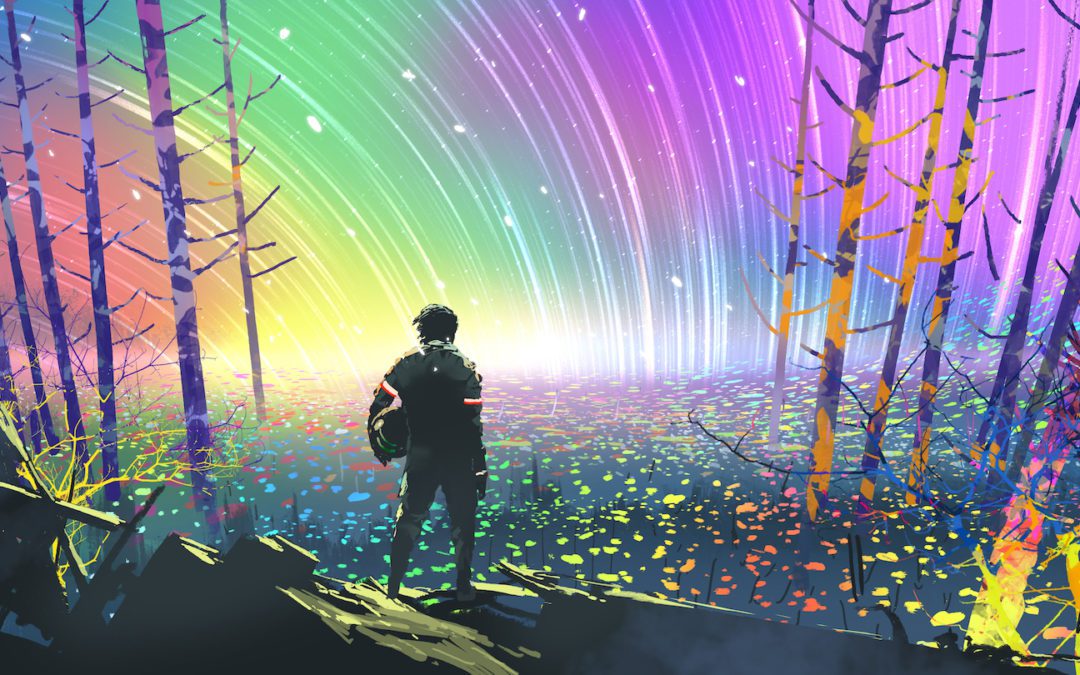Read Time: 3 minutes
In 2018, I moved to a cabin in the woods.
I was tired of busy weekends, heavy traffic, and waving neighbors. Plus I wanted more privacy and the chance to explore the unknown. So I convinced my wife and two kids to move from our California suburb to a forest in Arkansas.
I loved hiding in the woods.
Humans rarely visited. Our fam raised chickens, goats, cats, a gecko, and a dog. I kicked a snake by accident walking beside our pool. A thunder storm flooded our living room. A tornado snapped and relocated pine trees across our property.
Arkansas’ setting delivered adventure, trials, and tribulations.
But after three years, my wife and I chose to repurpose our lives. So in 2021, we returned to California for new careers and to be near immediate family.
Setting plays a key role in every story.
Because environment influences and affects the choices and actions of both fictional characters and real people moving across your overarching plotline.
setting ˈsediNG
noun
: the time, place, and circumstances in which something occurs or develops
Setting is the backdrop that your story takes place.
-
- i.e. Geography, time, weather, mood, social & cultural conditions, etc.
Unfortunately, many storytellers spend neglible time developing their setting despite it serving as a major interactive element that every character and reader will touch, see, smell, taste, and hear.
So whether your story occurs in a real-world city or a location based in fantasy, you must craft an immersive storyworld.
Examples from Best-selling Novels:
The Lord of the Rings by J.R.R. Tolkien
-
- This story takes place in Middle-earth, a land full of men and mystical creatures such as hobbits, orcs, elves, wizards, and dragons.
- Middle-earth’s expansive geography challenges, builds, and shapes every character for hundreds of pages.
- Detailed maps of Middle-earth can be found all over the internet and readers have fallen in love with Middle-earth as though it’s an actual character inside The Lord of the Rings universe.
Gone Girl by Gillian Flynn
-
- This story takes place in a quiet, suburban, fictitious town known as North Carthage, Missouri.
- The time is roughly 2009, 2010.
- The town was hit hard by the recession resulting in high crime, unemployment, homelessness, and all around unhappy residents.
- The sad, broken town is positioned as a symbolic depiction of Amy and Nick Dunne’s marriage.
The Maze Runner by James Dashner
-
- This story takes place in The Glade, a meadow several hundreds yards wide in any direction, surrounded by mammoth walls that open to a secondary setting, The Maze, a labyrinth that changes daily and houses monsters known as Grievers.
- The weather is eerily perfect with zero rain or snow, and it’s never too hot or too cold.
- There’s a mood of claustrophobia and evaporating hope due to imprisonment and rising death counts.
- The Glade and Maze deliver a storyworld that influences its characters’ choices and actions while raising readers’ questions.
Bottom line, make sure your setting possesses influential and symbolic characteristics.
Because setting impacts every character in your story and it empowers your readers to escape from their reality.
Take action:
-
- Describe at least 3 layers of your story’s setting. i.e. Time, geography, weather, etc.
- How does your setting affect or impact your characters?
That’s it for this Saturday, one writing tip to help you craft a story that connects with readers.
If you enjoyed this post, would you possibly share it? Maybe you’ll be helping someone create the story they’ve always wanted to write.
See ya next week!
— Dave
P.S. Whenever you’re ready… I’m still offering free 30 minute story coaching sessions… so let’s connect and clarify your hero’s story goal or any other component to create a cohesive storyline.

